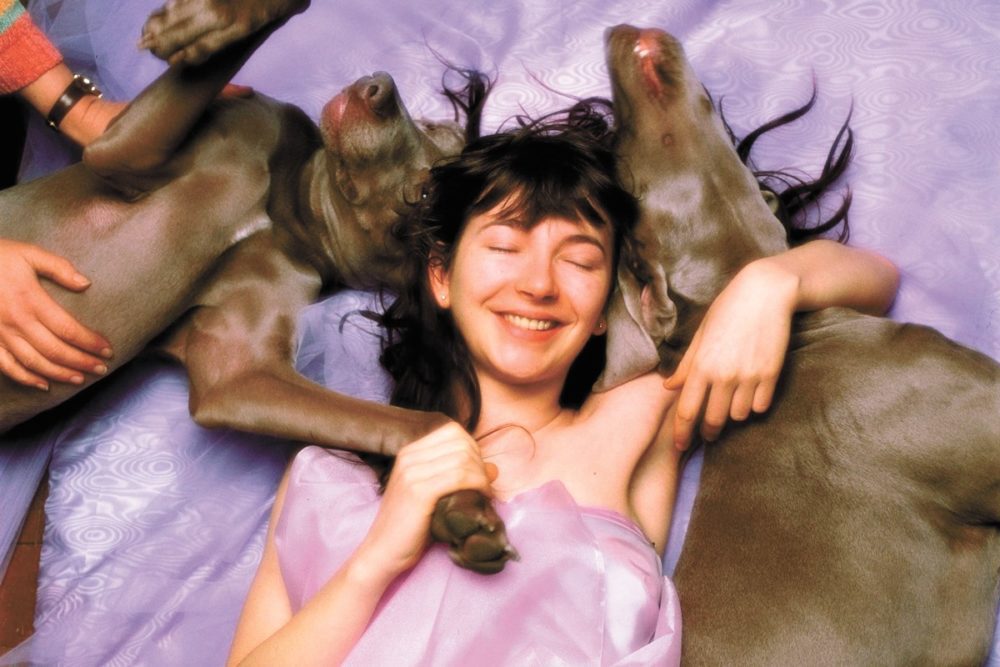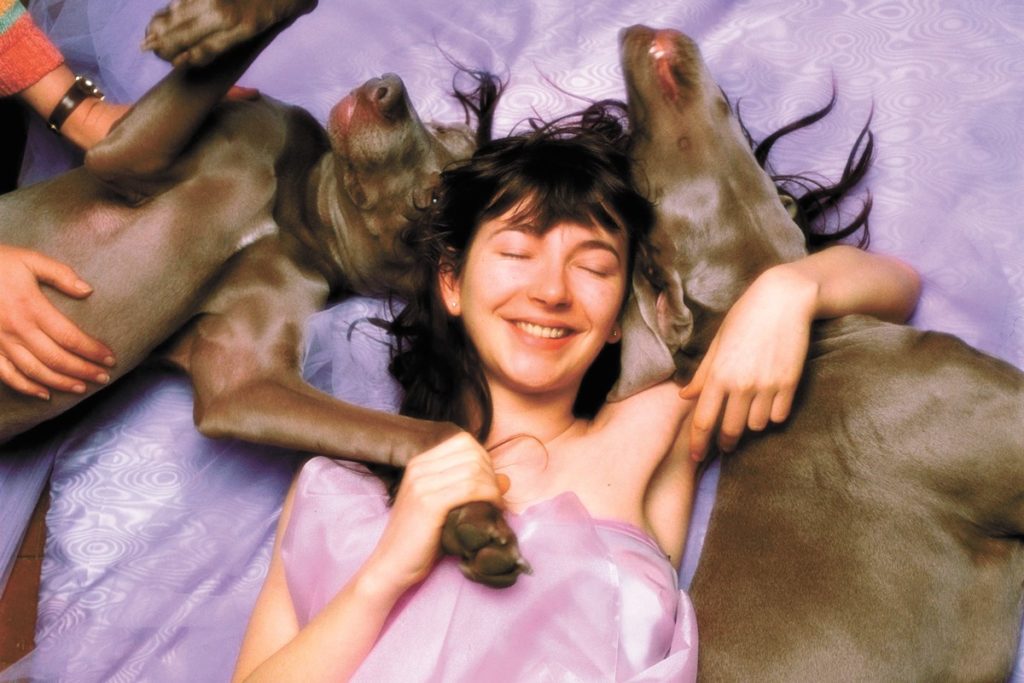

It opens with the woosh of a synth leading to a steady dance floor rhythm, albeit it one that, at 108 beats per minute, is slow enough for pensive swaying. Her voice rises, “It doesn’t hurt me/Do you want to know how it feels?”
The music surrounding her starts to sound like a world teetering on the verge of collapse. Yet, her voice remains in complete control as she dives into the chorus, wishing to make a deal with God. She stays strong, holding your attention as she continues to rise to the bridge, commanding, “Come on, come on darling, let’s exchange the experience.”
Thirty-five years ago, Kate Bush dropped listeners into the drama with “Running Up That Hill,” still one of her most memorable songs, and kept them hooked for the duration of Hounds of Love. Throughout the album, she builds narratives around complicated emotions, intertwining childhood fears and romantic apprehension in the title track, maternal love and a violent crime on “Mother Stands for Comfort.” She turns an obscure book into a single on “Cloudbusting” and wrote an entire album side following one story arc with The Ninth Wave.
Hounds of Love, released on September 16, 1985, was Bush’s fifth album, the second that she produced on her own and the first that she recorded in her own studio. It was an album that was simultaneously accessible and experimental, home to the beloved singles “Running Up That Hill,” “Cloudbusting,” “Hounds of Love” and “The Big Sky.” It also includes The Ninth Wave, a seven-song suite, essentially an album-within-an-album, that brings together traditional instruments with inventive use of synths and samples to tell the story of someone alone at sea overnight.
It was an ambitious album, one that came out of a major work-life change. In multiple interviews, Bush spoke about her decision to leave London and and to build a home studio. It was a crucial move, she would explain, because the home studio away from city life allowed her to work with fewer distractions. Moreover, for a recording artist who wanted to spend time experimenting with sounds, it was more cost effective than paying for studio time.
In the press surrounding the release, Hounds of Love was viewed as a comeback of sorts. Bush’s previous album, The Dreaming, was perceived to be less successful than her earlier efforts. However, when this was mentioned by interviewers, Bush would point out that this was simply a matter of charting singles, and not a measure of the artistic success of the album. In fact, as years passed, The Dreaming would go on to become a greatly admired by both fans and critics. It’s also the album that marks her debut as a producer, a pivotal moment leading to the creation of Hounds of Love.
Moreover, three years passed between The Dreaming and Hounds of Love, which was considered to be a significant absence for a popular singer (listening to old interviews, it seems quite possible that this marks the beginning of the “Kate Bush as reclusive artist” trope that persists to this day). Through her responses, it’s clear that Bush was set on following her own musical path, not one that was expected of her.
In a 1985 interview with the British television channel Music Box, Bush talked a bit about her relationship to press, stating that her intention was to promote her work, not herself. “I’m being the saleswoman for the record or the video or whatever it is at the time,” she explains.
To hear this 35 years after that media push for Hounds of Love might seem a bit baffling. Bush’s approach is fundamentally opposed to the advice that’s been drilled into just about everyone’s head now, when social media and personal branding is considered integral to success. To take the emphasis off the self and put it on the work sounds quaint, a luxury reserved for artists who have the financial support of institutions with big budgets. But maybe Bush was onto something; maybe it’s because of her insistence to keep the focus on the art and not the artist, something that she’s continued over the decades, that her work has had such longevity.
Certainly, that time she spent out of the limelight and focused on the music made an impact with Hounds of Love. On The Dreaming, you can hear Bush pushing the studio to the limits, layering and manipulating sounds to bring together traditional and modern music in an emotional way. She continues that practice on Hounds of Love, but with tighter songwriting and an emphasis on rhythm. “I think this album is dealing with me being much more influenced and excited by rhythm, particularly consistent rhythm,” she said in a Night Flight interview, “as soon as it’s danceable, people can relate to it.”
All that leads to a stickiness with Hounds of Love that would last for decades. Her songs on this album motivated people to look deeper into its roots. Take, for example, “Cloudbusting,” which was based A Book of Dreams, Peter Reich’s memoir of life with his father, the controversial psychoanalyst Wilhelm Reich. If you it up on Amazon now, you’ll see the subtitle, “The book that inspired Kate Bush’s hit song ‘Cloudbusting.'”
With Hounds of Love, Bush also built a collection of songs that would re-enter the public consciousness repeatedly over the years. Just as she employed sampling on Hounds of Love, her vocals from “Cloudbusting,” were cut-up and re-configured by the electronic duo Utah Saints for the 1992 song “Something Good,” which would become a top five hit in the U.K. while making an impact with both the dance music and alternative radio crowds in the U.S. In 2005, twenty years after the album’s release, The Futureheads covered “Hounds of Love.” Their version would make the U.K. top 10 and reintroduce the song to a new generation of listeners. Meanwhile, “Running Up that Hill” has been covered and remixed multiple times over the years, with notable reinterpretations from Placebo, Chromatics, and most recently Meg Myers. Aside from the direct nods to the songs on this album, there are the countless other artists across disciplines who have found inspiration in Hounds of Love.
In a British radio interview from the time of the album’s release, Bush spoke about the art, particularly films, that inspired her and related it to her own music. “When I write things, I, ideally, would love to be doing to people what happens to me when I’m affected by these things,” she said. No doubt, with Hounds of Love, Bush achieved that.

